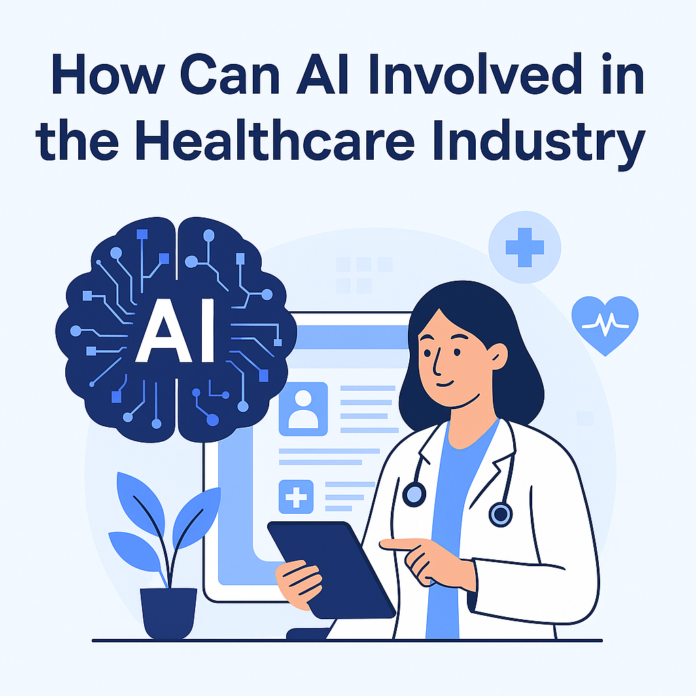In today’s digital era, the demand for healthcare app development has soared. Technology has transformed how healthcare services are delivered, making them more accessible, efficient, and user-friendly. If you’re considering developing healthcare software, understanding the nuances of the process is crucial. This guide walks you through the essential steps to successfully create healthcare software that meets industry standards and user expectations.
Understanding the Need for Healthcare Software
Healthcare software serves as a bridge between medical professionals and patients, streamlining processes such as appointment scheduling, medical records management, telemedicine consultations, and patient monitoring. With the rise of digital health technologies, healthcare software can:
- Enhance patient care quality.
- Reduce operational costs for healthcare providers.
- Enable remote monitoring and telehealth services.
- Ensure regulatory compliance for data security.
Key Types of Healthcare Software
Before diving into the development process, identify the type of healthcare app you want to create. Common categories include:
- Electronic Health Records (EHR) and Electronic Medical Records (EMR):
- Centralized systems to manage patient health data.
- Telemedicine Apps:
- Enable virtual consultations and remote healthcare services.
- Appointment Scheduling Apps:
- Simplify the booking process for patients and providers.
- Fitness and Wellness Apps:
- Focus on tracking fitness goals, diet plans, and overall wellness.
- Remote Patient Monitoring (RPM) Apps:
- Allow healthcare providers to monitor patients with chronic conditions remotely.
- Pharmacy and Prescription Apps:
- Help users order medications and track prescriptions.
Steps to Develop Healthcare Software
Developing healthcare software is a multi-step process that requires thorough planning, compliance with regulations, and collaboration between technical and healthcare experts.
1. Research and Define Requirements
- Understand User Needs: Identify the pain points of your target audience (patients, healthcare providers, or administrators).
- Market Analysis: Analyze competitors’ offerings and identify gaps you can address.
- Features List: Define the core features such as user registration, scheduling, data storage, and analytics.
2. Choose the Right Development Team
- Opt for a team with experience in healthcare app development.
- Include professionals like developers, designers, healthcare consultants, and compliance experts.
3. Compliance and Regulations
- Healthcare apps must comply with stringent regulations to protect patient data:
- HIPAA (Health Insurance Portability and Accountability Act) for the U.S.
- GDPR (General Data Protection Regulation) for the European Union.
- ISO 13485 for medical device software.
- Ensure data encryption, secure APIs, and robust authentication methods.
4. UI/UX Design
- Prioritize user-friendly and intuitive design.
- Incorporate accessibility features to cater to diverse user groups.
- Use consistent color schemes and navigation structures to improve usability.
5. Development
- Technology Stack: Choose technologies that suit your app’s requirements (e.g., React Native, Flutter for cross-platform apps).
- Backend Development: Set up secure servers and databases to manage data effectively.
- API Integration: Integrate APIs for payment gateways, wearable device data, or third-party medical services.
6. Testing
- Conduct thorough testing to ensure functionality, security, and compliance.
- Usability Testing: Ensure the app is easy to navigate.
- Security Testing: Check for vulnerabilities in data protection.
- Performance Testing: Evaluate app speed and scalability.
7. Deployment
- Deploy the app on relevant platforms (App Store, Google Play, or web).
- Ensure all regulatory approvals and certifications are obtained before release.
8. Maintenance and Updates
- Monitor app performance and user feedback.
- Release regular updates to fix bugs and introduce new features.
Essential Features of Healthcare Software
When planning your healthcare app development, consider these must-have features:
- User Authentication:
- Secure login via email, phone number, or social media.
- Data Encryption:
- Protect sensitive health information with robust encryption standards.
- Integration with Wearables:
- Enable data collection from devices like fitness trackers or smartwatches.
- Telemedicine Functionality:
- Video calling, chat features, and appointment scheduling.
- Multi-Language Support:
- Cater to diverse audiences with language preferences.
- Analytics and Reporting:
- Provide insights into patient trends and operational efficiency.
Challenges in Healthcare App Development
Developing healthcare software comes with its unique challenges. Being aware of these can help you plan better:
- Regulatory Compliance:
- Navigating complex healthcare regulations can be time-consuming.
- Data Security:
- Safeguarding sensitive patient data requires advanced security measures.
- Integration with Legacy Systems:
- Many healthcare providers still use outdated systems that need integration with new apps.
- User Adoption:
- Ensuring that both patients and providers adopt the app requires effective onboarding and education.
The Cost of Healthcare App Development
The cost of healthcare app development depends on several factors:
- Complexity of Features: More advanced features lead to higher costs.
- Platform Choice: Developing for multiple platforms (iOS, Android, web) increases the budget.
- Team Location: Hiring developers from different regions affects the cost (e.g., U.S. developers are typically more expensive than developers from Asia).
- Timeline: A tight development schedule may require more resources, raising costs.
On average, a basic healthcare app may cost between $50,000 to $150,000, while more complex solutions can exceed $300,000.
Trends in Healthcare App Development
Keeping up with the latest trends ensures your app remains competitive and innovative:
- AI and Machine Learning:
- Implement AI for diagnostics, predictive analytics, and personalized healthcare.
- Blockchain Technology:
- Use blockchain for secure and transparent data management.
- IoT Integration:
- Integrate Internet of Things (IoT) devices for real-time patient monitoring.
- Virtual Reality (VR) and Augmented Reality (AR):
- Enhance patient education and training for healthcare professionals.
- Chatbots:
- Offer 24/7 assistance through AI-driven chatbots for basic inquiries.
Conclusion
Healthcare app development is a transformative process that can revolutionize the delivery of medical services. By following a structured approach—from understanding user needs to deploying a compliant and secure app—you can create a solution that makes a real impact. Whether it’s an EHR system, telemedicine platform, or fitness tracker, the possibilities in healthcare software are vast.
Stay ahead of the competition by leveraging the latest technologies and prioritizing user experience. With the right strategy and team, your healthcare app can lead the way in modernizing patient care.































